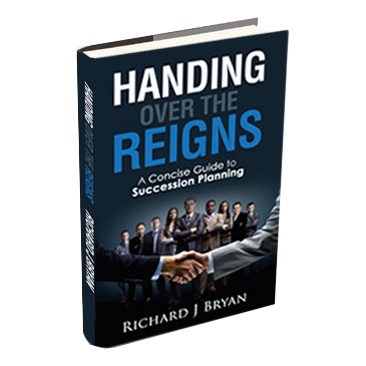While having a bottomless bank account certainly doesn’t hurt, money isn’t the common denominator here—it’s actually something that doesn’t cost a cent: strategy. In my travels through the leadership keynote speaker world, and especially when leading succession planning retreats, I meet business leaders from all industries and every size of enterprise. And, even though the businesses that are struggling might be dealing with a variety of different challenges, nearly all of these challenges could have been averted with a bit more focus.
Why Business Strategy Matters
Many of the people I meet on my succession planning retreats share a common complaint: strategy takes work! And they’re not wrong. It can be incredibly difficult to tear oneself away from the day-to-day management of the business to focus time and resources on what feels like a theoretical future—particularly if one’s company is facing tough times..
But here’s the hard truth that these folks always come around to realizing: if they’d had a sound business strategy to begin with, they probably wouldn’t be failing in the first place! When your business lacks strategic direction, everyone is confused—leadership, employees and perhaps most importantly, customers! Here are four simple steps to get you started.
- Future Focus. Ask yourself this question: when creating your annual operating plan, are you using the rear-view mirror…binoculars…or a telescope? Yes, the past should have some bearing on your future decisions—but it shouldn’t be your primary driver. Instead, start with a long view of what’s coming (3–5 years out) and work backwards from there, setting small milestones along the way, and working methodically toward your big-picture goals.
Recently, I led a strategic planning retreat with the owner and executive team of a medium-sized privately owned business. Their goal was to outline their strategic plan for the next five years—including succession planning, so the current owner could transition out of the business in a controlled and intentional way. Here’s an exercise that worked well:
We put up different-colored sticky notes, with key strategic objectives on them, on the large glass windows of the room we were in, in five columns for the next five years. Using this simple visual way of planning, it became immediately obvious that the executive team was overambitious and unfocused; what they were planning was simply not possible.
In this case, it wasn’t just about having the capacity to accomplish these goals—but also about credibility with their own teams. We spent the rest of the morning working through potential conflicts with other priorities in the business. Ultimately, we were able to develop a simpler plan that they felt confident could be implemented in the agreed-upon time-frame.
- Find the Holes. Once you’ve got your 30,000-foot view worked out—what’s standing in the way of your success? This part of the business strategy planning process may not be the most enjoyable, but it’s likely the most important. Your strengths and weaknesses may be around competitive advantages, leadership talent or even operational resources. But until you know what’s moving you forward and holding you back, it’s hard to know how to prioritize.
If you haven’t attended one of my succession planning retreats, you may not know that I come by my business turnaround expertise quite honestly—having lived through the process with my family business. In our case, the biggest hole was confident, focused leadership. With a young CEO at the helm (me), we were trying to turn the business around in an industry with high revenues but notoriously low margins. Once my mentor Frank came on board, we were able to clarify our strategic objectives—and most importantly, simplify the plan.
- Set Priorities. Like it or not, your company’s resources are finite. The two business strategy exercises above should go a long way towards identifying the parts of your enterprise that need them most. For those attending my succession planning retreats, it may be most important to invest time and money into leadership talent development. For others, it may be critical to upgrade facilities, or restructure the org chart in order to better leverage in-house strengths. Identify the lowest-hanging fruit and set about picking them.
In the case of my family business turnaround, our first objective was pretty simple: survival! At the time, we were losing $3.5M a year. The odds were stacked against us, and our competitors were only too happy to add to the rumor mill that we were not going to make it. With Frank’s expert insight, and some tough decisions about right-sizing the business, we managed to get back into profit within 18 months—and built a solid platform for ongoing success.
- Assess + Adjust. Unfortunately, strategy isn’t a Crock Pot—there is no “set it and forget it” in business! So you’ll have to continue to evaluate your company’s performance, both against the metrics you’ve set in the first three points, and against the competitive landscape for your industry. If 2020 taught us anything, it’s that the marketplace (along with our place in it) can turn on a dime. Here’s how our family successfully weathered the business turnaround.
A) SURVIVAL: In the first 18 months, every decision we made was focused on cutting costs, with the simple goal of stopping the cash hemorrhage and reaching a break-even point.
B) IMPROVEMENT: The second phase centered on improving our systems and financial reporting so that we could boost margins and profitability. This took another 12 months.
C) GROWTH: Once we had a solid and profitable business, we started to add new franchises and gradually grow our revenue. After eight years, we were able to successfully sell the business to another dealer group.
Parting Shot: Take Your Pulse.
I can’t stress this enough: don’t forget about the impact of the business turnaround process on your team. While this may not be a “strategy step,” it’s critical to turn your assessment eye inward, and consider the feelings of everyone on your team; remember, it’s not just about capacity, but also about managing risk and credibility throughout your organization.
I remember conducting a review meeting with my longtime assistant, Jean, during which she pointed out to me that just because I happened to find change exciting, this didn’t mean all the members of our team felt the same way. She implored me to understand the impact of these people having constant change and different strategic initiatives thrust upon them. Not only was this confusing, but also stressful.
As Jean said, “It’s only exciting if you are the one leading the change.” So, while strategic focus and resource management are indeed very important, you must always consider your invaluable human resources—and work tirelessly to protect these at every turn.
Related Topics:
Business Contingency Planning: What, Why + How
Stepping Out, Not Down: Why Your Aging CEO Won’t Retire
The Role of the Board During Family Business Succession


